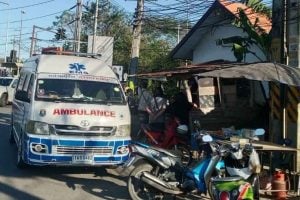Desalination plant finally comes onstream

KARON: The new desalination plant capable of producing up to 12,000 cubic meters of potable water a day is in its final testing stages and will begin full production by the end of this month, says the head of the island’s largest water supply system.
Phuket Provincial Water Supply (PPWS) Manager Sayan Wareearoonroj told the Gazette that the plant, which uses reverse-osmosis (RO) technology, began supplying water to Kata-Karon on a trial basis on December 29.
On January 12, the plant began pumping 4,000m³ to Patong and 3,000m³ to Kata-Karon, also on a test basis, he said.
“We expect it to be running at its full capacity of 12,000m³ a day by the end of this month,” he added.
During the testing phase, the PPWS has been mixing the purer RO water with supplies from Bang Wad Reservoir in Kathu. Despite the increase in water quality, consumers receiving the RO water will continue to pay at the old rate for the foreseeable future, he said.
In Kata-Karon, reserves from the PPWS system will be used only in case of shortages, he said.
K. Sayan urged consumers to check their water pipes to ensure they can withstand the higher pressures which will be used with the new RO supply.
The RO water is potable, but people should ensure their storage tanks and plumbing are thoroughly clean if they plan to drink it. They should also wait until the PPWS has completely cleaned the municipal supply system by chlorination, he said.
There have been bureaucratic obstacles to the RO plants operation because of the need to discharge briny process water back into the sea, but the plant should be granted full permission from the Ministry of Interior soon, he said.
The man responsible for building the RO plant, Jaturong Sa-duagkarn of REQ Co Ltd, told the Gazette that during testing the plant has taken in about 20,000m³ of seawater daily. About 7,500m³ of this is processed into pure RO water and the remainder drained back into the sea through a pipe that discharges about 800 meters off the coast at Karon Beach, at depth of about 16 meters.
Testing in the discharge area failed to find any difference in water quality there, he said.
Pamuke Achariyachai, Managing Director of the Kata Group of hotels and resorts, said the RO supply would come as a relief to long-suffering hotels in the area which have for years been forced to buy supplies from water trucks.
K. Sayan said that areas relying on the main PPWS supply system needn’t worry about shortages this dry season.
“Now Phuket has enough water to get through the dry season. We face the same problem every year, so we know how to plan for it,” he said.
The PPWS now has an additional 2 million cubic meters in reserve water supplies from the Hitlor and Manik lagoons in Tambon Srisoonthorn, which are now connected to the PPWS system via a 17-kilometer pipeline completed last year.
The PPWS has also signed an agreement with REQ to buy additional water, if needed. REQ maintains two water supply sources in Kathu and one more in Chalong. Together these can produce up to 4,800 cubic meters a day to augment PPWS supplies, he said.
Phuket City has its own municipal water supply system, which uses Bang Wad Reservoir and tin mine lagoons as sources.
Janpen Kotchakarn, who heads the municipal water supply’s production unit, said her office would continue to monitor and adjust pressure rates to minimize wastage while ensuring there is enough water to meet demand.
“We face this problem every dry season so we are well acquainted with it,” she said.
The municipality currently pipes about 26,000m³ a day through a distribution network covering about 12 square kilometers. The town also supplies much smaller amounts to a community in the Soi Phaneang area of neighboring Tambon Rassada, she said.
Latest Thailand News
Follow The Thaiger on Google News:
























